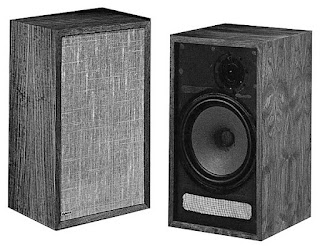Will Dolby Atmos Music revolutionize recording?
Just the other day, I saw the above video on YouTube:
Introducing Dolby Atmos Music
From the description:
Start your mixing in Dolby Atmos today with a free trial of Dolby Atmos Production Suite.
Available now at https://dolbylabs.co/tryDolbyAtmos Dolby Atmos Music expands the creative palette for artists and creators. Isolate and articulate instruments and vocals with incredible clarity and make listeners feel like they are inside the music.
I wonder what creators of equipment, from Emotiva to PS Audio (I sent them an email and will follow-up if I hear back) think of this statement made in the video?
"What happens today when you are in stereo you have all these instruments fighting to be heard. But with Dolby Atmos, each instrument has its own space to breathe, so that all that articulation, detail and clarity can be maintained."
I can't evaluate how accurate the Atmos guy is, but I suspect the Audiophile or "High End" industry can. But Dolby Atmos Music does on the surface sound exciting, a 21st century improvement in the recording process, assuming it has high end resolution and low distortion. And I suspect as with Dolby Vision in HD, it will take off, i.e. be a market success.
More on Dolby Vision from the above hyperlink Digital Trends article:
As touched on above, Dolby Vision is a proprietary, dynamic HDR format developed by Dolby Labs. By adjusting the picture on a scene-by-scene (and even frame-by-frame) basis, it lets you see more detail with better color accuracy. It is constantly making adjustments so that each image on the screen is optimized. But there’s more to it than that.In addition to the ability for content creators to tweak picture settings at a highly granular level, Dolby Vision supports a much wider range of possible settings than the more conventional (and static) HDR10. For instance, HDR10 supports a maximum picture brightness of 1,000 nits for TVs. Dolby Vision can go much brighter — up to 10,000 nits.The same is true for color accuracy. HDR10 lets content creators specify color using 10 bits of data, whereas Dolby Vision supports up to 12 bits. That spec might not seem like a big deal — after all, that’s only a difference of 2 bits — but it makes a huge difference. With 10 bits, you can pick from amongst 1,024 shades of each primary color, which gives you over a billion total possible colors. Again, that sounds huge until you realize that 12 bits give you 4,096 shades and a total of over 68 billion colors.If that sounds like overkill, when it comes to your TV, it is. For the moment, there are no TVs you can buy that are capable of displaying 10,000 nits of brightness or the 68 billion colors that Dolby Vision provides. Even the brightest TVs on the market tend to max out at 2,000 nits of brightness, and not even LG’s newest 8K OLED TV offers better than 10-bit color support. That said, TV technology is advancing very rapidly so Dolby Vision’s current above-and-beyond specs may seem perfectly reasonable in another five years.
Douglas Trumbull, the visual effects pioneer, analyzed how people perceive film and found that a higher frame rate, not just resolution (he was using 4K) makes for more realism. I've never seen his work so I don't know if I'd agree or prefer the Magi process. I find, personally, viewing the best cinematography using digital media, versus film, that I prefer (it seems more natural) the best film to digital although perhaps the issue is cinematographers just don't have the skill to do lighting as well now as the best of the past, like Jack Cardif.
Of course, later the Dolby Atmos guy talks about low-fi sound bars and other platforms that can still take advantage of this recording process but I wonder what the potential is for "audiophile" systems, even for people on a budget someone like me who uses Emotiva for my home theater system?
Feel free to comment (politely) below.



Comments
Post a Comment